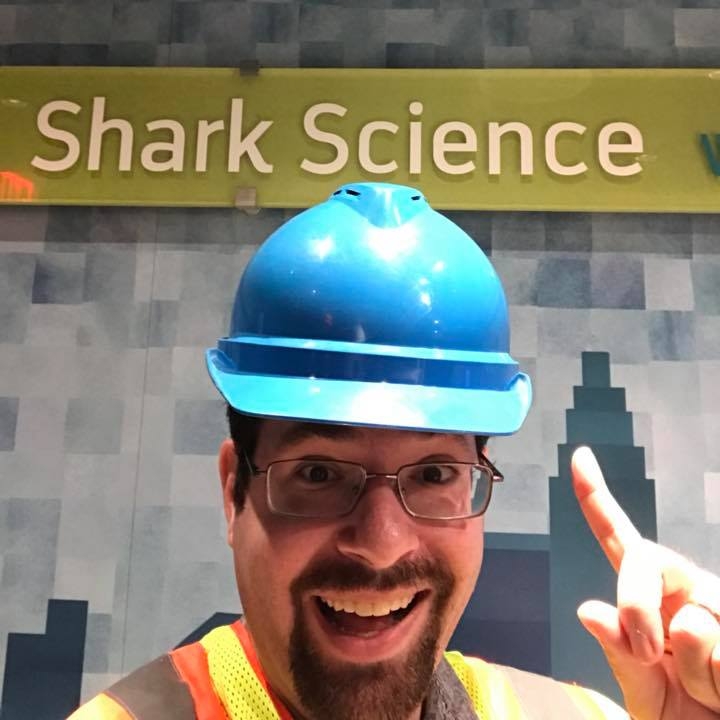Anne Toomey has a tough message for me: Facts alone won’t convince anyone to help an endangered species or ecosystem.
I’m a scientist trained to evaluate data and support evidence-based decision-making, so to me, this is a jarring statement. But personal experience, as well as decades of data, help me realize it’s true.
I’ve spent the past decade communicating with the public about why marine life deserves our conservation attention. I’ll often share shark facts on social media, or with policymakers, only to see people reject objectively true information — or, even more bafflingly, accept that the facts are accurate but choose not to support a conservation policy endorsed by experts and evidence.
Toomey, a conservation scientist at Pace University’s Department of Environmental Studies and Sciences, tells me why this happens: It’s human psychology.
“Knowledge is formed by our experiences, not just by reading facts in a textbook,” she says. “Scientists believe ‘if only people knew what I know, they’d think differently from how they think now.’ But that’s not how it works. We don’t just need to give people information. We need to start understanding how that information can be brought into a process of change-making.”
That’s where Toomey comes in. Her work focuses on understanding what makes the public take action to save threatened species and the ecosystems that they, and we, depend on. It’s an important field of research, as developing policy solutions to address the planet’s many environmental threats requires more than just convincing conservation scientists and environmental activists — we also need the public on our side.
How do we accomplish that? Toomey has reviewed decades of psychological and education research on how to change minds and then applied it to environmental science. Her results may surprise many conservation scientists and environmental activists whose public outreach often focuses entirely on sharing facts.
What Doesn’t Work
The way traditional science and conservation outreach work is based on the long-debunked “knowledge deficit” model of understanding how people make decisions.
“According to the deficit model, the problem is that people don’t have enough information, and with the right information, they’ll change their behavior,” says Kiki Sanford, cofounder of the Association for Science Communicators and host of the podcast This Week in Science. “I, an expert who knows something, am going to give you some information, and that’ll make you a smarter and better citizen who makes better choices.”

Though the idea that information alone doesn’t change minds may be startling to conservation scientists, to scholars and practitioners of science communication it’s a long-established fact. Folks in the science communication world call the knowledge deficit model “a zombie idea — it just won’t die,” says Amanda Stanley, executive director of COMPASS, an organization that trains scientists how to communicate more effectively. “The real reason why it won’t go away is that sharing information feels like a safe space for scientists. Scientists aren’t used to thinking about what we want to change as a result of our actions.”
Many of the world’s most pressing conservation challenges, from habitat loss to pollution to poaching to climate change and everything in between, require people to modify their behaviors, and that requires either strong new regulations or convincing them to adopt new habits and practices. In short, we need to change people’s minds to save the planet, so it’s important to understand how to do so.
“Conservation science was formed with a mission,” Toomey tells me. “We aren’t trying to learn more about the world for knowledge’s sake — the goal is to conserve biodiversity. If we’re starting with this goal in mind, how do we use the tools we have to accomplish our mission?”
Just Sharing Facts Doesn’t Work. Try This Instead
The first part of the answer, Toomey says, requires recognizing that what many scientists have long been doing doesn’t work. We can’t try the same thing over and over and expect different results, especially when scientific research from related fields has repeatedly proven that this is a flawed model.
We’ll get better results, Stanley says, by clearly defining our goal for change, then tailoring our communications and outreach strategy to accomplish that goal, rather than using a one-size-fits-all approach.
For example, one under-discussed consequence of climate change is its disruptive effect on fisheries as fish populations move to get away from suddenly warmer water. This will push fish we’ve relied upon out of our reach, with negative consequences for the livelihoods of coastal communities and global food security. Just telling someone the truth that “the fish will move” won’t fix that.
“When someone says they want to inform policymakers about how fish move in response to climate change, I tell them that isn’t enough,” says Stanley. “We need to have goals in mind before we start discussing tactics to achieve those goals. What exactly do they want policymakers to know? What exactly do they want policymakers to do with that information? Without answering both these questions, we won’t be effective.”
In other words, don’t just mention dry statistics. Put them into a context that policymakers will understand, care about, and feel motivated to act upon.
“And since most surveyed scientists are uncomfortable with the idea that the goal of communicating with the public should be to inspire some kind of behavior change, maybe it’s not surprising that so much of our outreach isn’t successfully changing minds.”
Another element of successfully changing minds comes down to building community relationships. People are more willing to listen to someone they know, someone who has helped them before than some random expert who just tells them what they’re doing “wrong.”
“Our understanding of the world is shaped by lots of things: the people around us, where we grew up, the things we’ve seen,” Toomey says. “Think about connection, not persuasion. Stop thinking about ‘how do we get these people to think differently, to act differently,’ and instead think about ‘who are these people, what do they care about, where do they get their information, who and what do they trust?’”
Stanley agrees that building relationships is important, “as is making sure that communication is a dialogue and that people feel listened to and respected.”
Ultimately, facts do have a role to play, they just can’t be the sole focus.
“Facts are the pool that you go swimming in after you have already put your bathing suit on,” Toomey says. “Imagine if you get pushed into the pool while wearing your work clothes. You’re going to want to get out as soon as possible, and you’re going to be pissed off at the person who pushed you in! But if you’re already interested in learning more, facts are hugely important. We should make facts available, but not assume that they’re the gateway to change.”
One last thing to keep in mind: If you still believe that facts and evidence alone are enough to change peoples’ minds after reading a summary of decades of facts and evidence showing this isn’t the case, you’ve proven Toomey’s point.
Previously in The Revelator:
The Climate Movement Must Reimagine Its Relationship With Art


